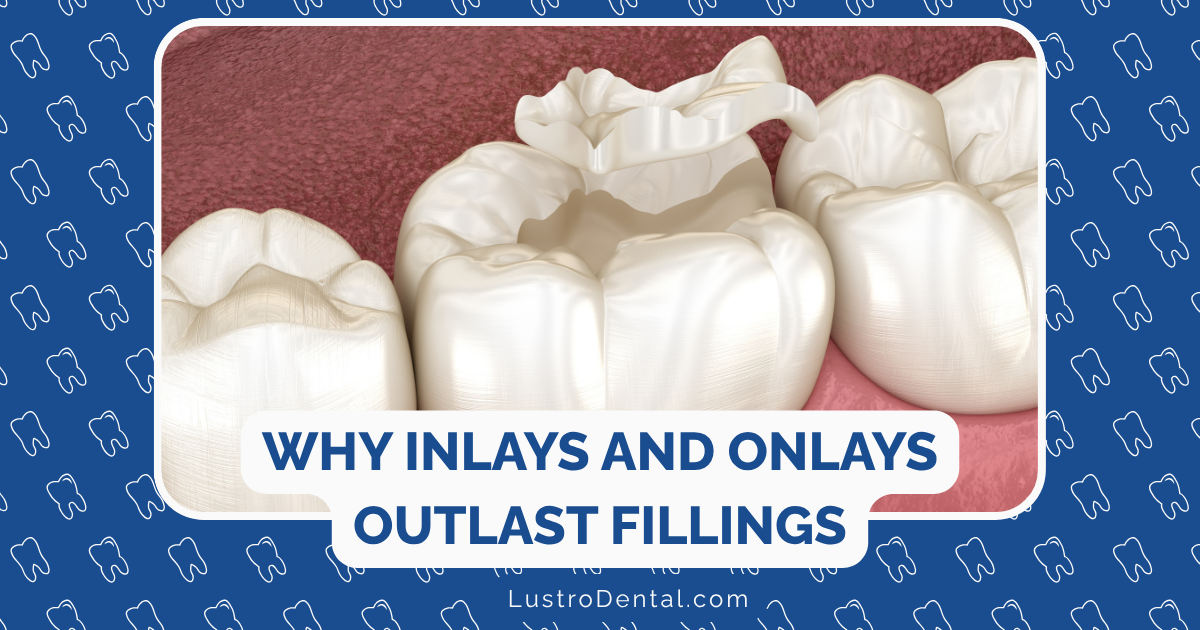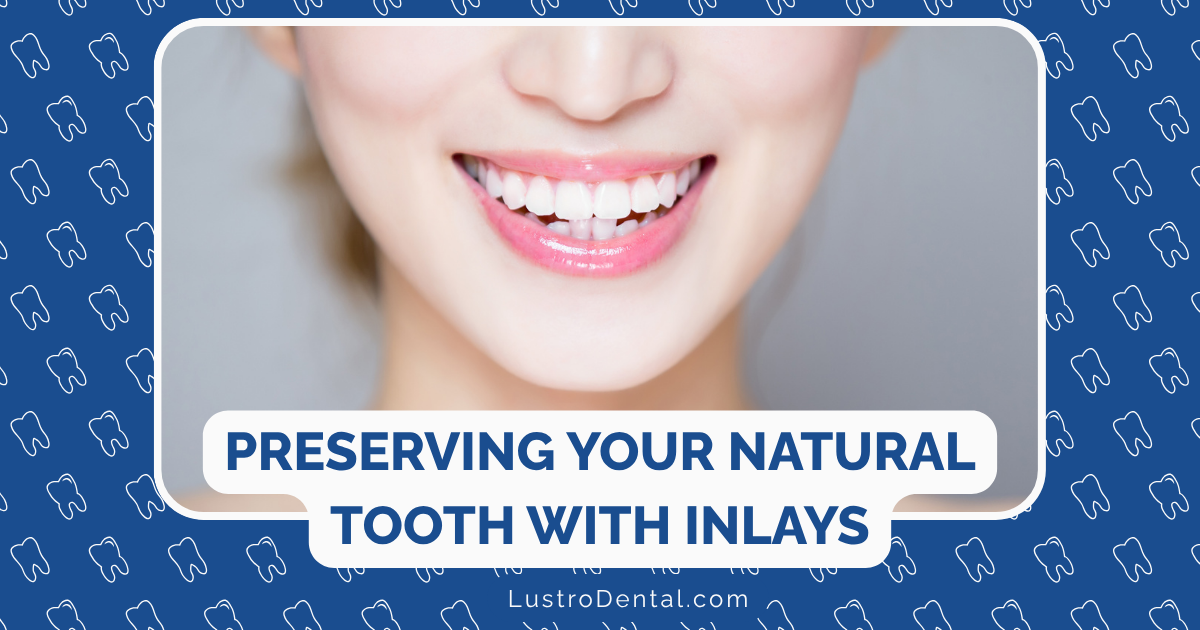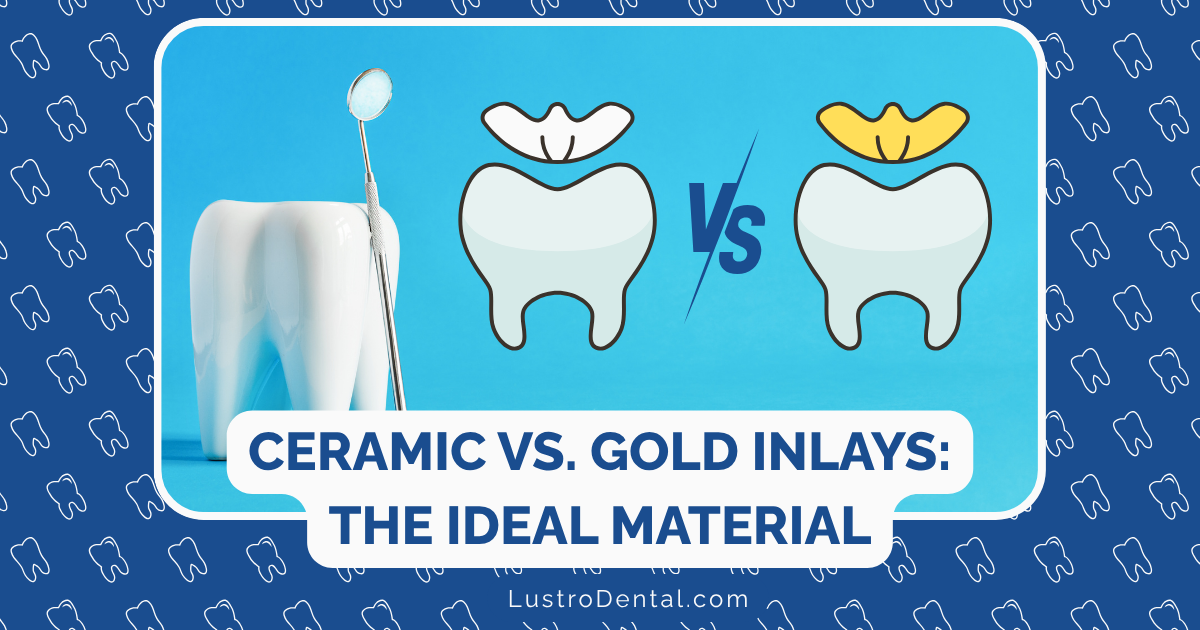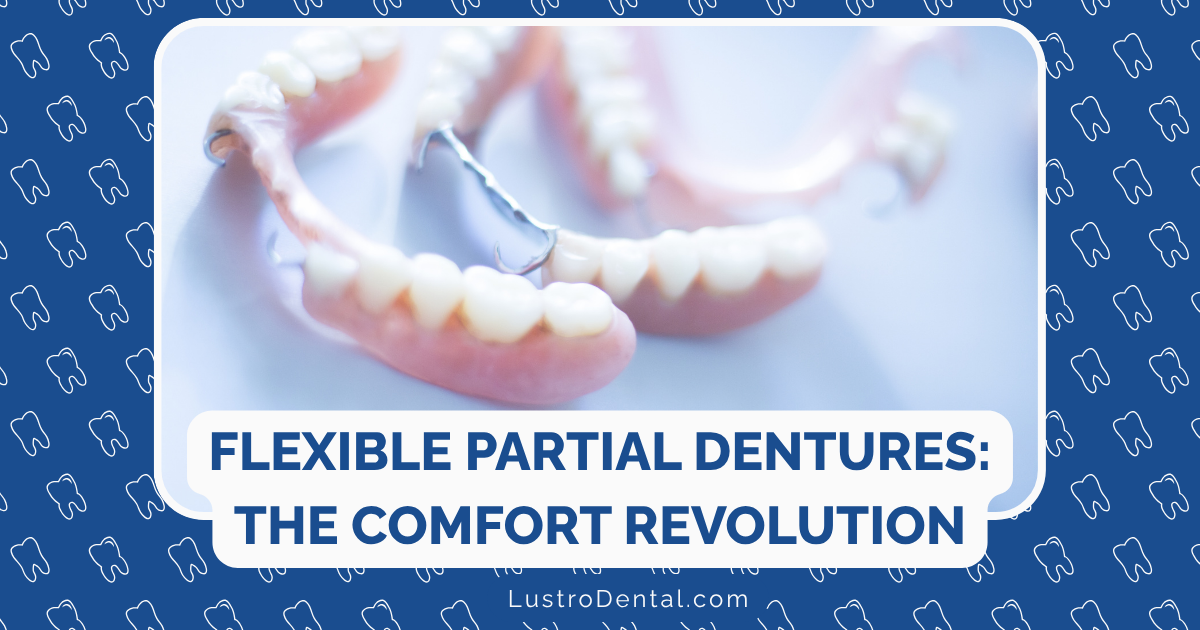The Precision of Inlays and Onlays: Why They Last Longer Than Fillings

When it comes to restoring damaged teeth, dental fillings have long been the standard treatment. However, for many patients, a more precise and durable option exists: dental inlays and onlays. These custom-crafted restorations offer significant advantages in longevity and performance compared to traditional fillings. But what exactly makes them last longer, and is the additional investment worth it?
As someone who’s spent years helping patients understand their dental restoration options, I can tell you that the difference between a filling and an inlay or onlay isn’t just about cost—it’s about precision, materials, and long-term oral health. Let’s explore the science and craftsmanship behind why inlays and onlays typically outlast conventional fillings by years, even decades.
The Longevity Gap: Comparing Lifespans
First, let’s look at the numbers. According to clinical studies and data from the American Dental Association:
- Traditional composite fillings typically last 5-10 years
- Amalgam (silver) fillings average 10-15 years
- Dental inlays and onlays can last 15-30 years
This significant difference in lifespan isn’t coincidental—it’s the result of fundamental differences in how these restorations are designed, fabricated, and placed. Understanding these differences helps explain why inlays and onlays represent a superior long-term investment for many patients.
Precision Fabrication: The Foundation of Longevity
Perhaps the most significant factor in the extended lifespan of inlays and onlays is their precision fabrication process.
Direct vs. Indirect Restorations
Traditional fillings are “direct restorations,” meaning they’re created directly in your mouth. The dentist places soft material into the cavity, shapes it, and then hardens it in place. While convenient, this approach has inherent limitations in accuracy and strength.
Inlays and onlays, by contrast, are “indirect restorations.” They’re custom-fabricated outside your mouth based on precise impressions or digital scans of your tooth. This approach allows for:
- Superior marginal fit: The edges where the restoration meets the tooth can be crafted with microscopic precision
- Optimal contours: The shape can be perfectly designed to match your bite and adjacent teeth
- Material optimization: The restoration can be created under ideal conditions for maximum strength
Dr. Sarah Johnson, a prosthodontist at the University of Michigan School of Dental Medicine, explains: “When we create fillings directly in the mouth, we’re working in a challenging environment with limitations in visibility, moisture control, and access. With inlays and onlays, we can achieve a level of precision that’s simply not possible with direct techniques.”
Laboratory Precision
Traditional laboratory-fabricated inlays and onlays involve creating a model of your tooth, then hand-crafting the restoration by a skilled dental technician. This meticulous process allows for extraordinary attention to detail.
“A skilled dental technician can achieve marginal adaptations of less than 50 microns—about half the width of a human hair,” notes Dr. Michael Chen of the American College of Prosthodontists. “This precision at the margins is critical for preventing bacterial infiltration and recurrent decay.”
CAD/CAM Technology: Digital Precision
Modern CAD/CAM (Computer-Aided Design/Computer-Aided Manufacturing) technology has further enhanced the precision of inlays and onlays. Systems like CEREC, E4D, and others use digital scanning and computer-controlled milling or 3D printing to create restorations with remarkable accuracy.
A 2023 study published in the Journal of Prosthetic Dentistry found that CAD/CAM-fabricated ceramic inlays achieved marginal gaps averaging just 80-110 microns—well within the clinically acceptable range of under 120 microns. This precision fit significantly reduces the risk of bacterial infiltration at the margins, a common cause of restoration failure.
Material Superiority: Strength and Stability
The materials used for inlays and onlays offer significant advantages over those used in traditional fillings:
Composite Fillings: Inherent Limitations
While modern composite (tooth-colored) fillings have improved dramatically, they still face several challenges:
- Polymerization shrinkage: Composite materials contract as they harden, creating microscopic gaps
- Incremental placement: Larger fillings must be built up in layers, creating potential weak points
- In-mouth curing limitations: Light-curing in the mouth may not achieve optimal hardness throughout the material
These factors can lead to marginal leakage, fractures, and wear over time.
Inlay/Onlay Materials: Engineered for Performance
The materials used for inlays and onlays are specifically selected for durability:
- Ceramic/Porcelain: Offers excellent wear resistance and aesthetics with compressive strengths exceeding 400 MPa
- Lithium Disilicate: Provides exceptional strength (360-400 MPa) and aesthetics
- Composite Resin: Laboratory-processed composite offers superior properties to direct placement
- Gold: Still considered the gold standard for durability, with decades of proven performance
Dr. Lisa Rodriguez of the Academy of Biomaterials explains: “Laboratory-processed materials achieve a degree of polymerization and structural integrity that’s simply not possible with in-mouth techniques. This translates directly to improved physical properties and longevity.”
Research from the International Journal of Prosthodontics shows that laboratory-processed composite inlays exhibit 30-40% higher flexural strength and significantly less wear than direct composite fillings.
Marginal Integrity: The Critical Edge
The junction where a restoration meets the natural tooth—called the margin—is the most vulnerable area for failure. Superior marginal integrity is perhaps the single most important factor in restoration longevity.
The Problem with Filling Margins
Traditional fillings face several challenges at the margins:
- Polymerization shrinkage can pull the filling material away from the cavity walls
- Technique sensitivity makes consistent marginal adaptation difficult
- Limited visibility during placement can lead to overhangs or underfilled areas
A 2022 study in the Journal of Dental Research found that composite fillings showed marginal discrepancies averaging 150-250 microns after five years, with 68% showing detectable leakage.
The Inlay/Onlay Advantage
Inlays and onlays achieve superior marginal integrity through:
- Precision fabrication outside the mouth under optimal conditions
- Minimal polymerization shrinkage (limited to the thin layer of cement)
- Microscopic quality control before placement
- Optimal material properties at the critical margin areas
A comparative study published in Operative Dentistry found that ceramic inlays maintained marginal integrity significantly better than composite fillings over a 10-year period, with 91% of inlays showing excellent margin quality compared to only 42% of composite fillings.
Structural Support: Strengthening vs. Weakening
Perhaps one of the most underappreciated advantages of inlays and onlays is how they interact with the remaining tooth structure.
How Fillings Can Weaken Teeth
Traditional fillings, particularly large ones, can actually weaken teeth:
- They don’t reinforce the remaining tooth structure
- Large fillings can act as wedges, potentially causing cusps to fracture under chewing forces
- Studies show that teeth with large composite fillings can lose up to 50% of their strength
How Inlays and Onlays Strengthen Teeth
In contrast, inlays and onlays can actually increase tooth strength:
- They’re bonded to the tooth using strong adhesive cements
- Their design distributes chewing forces more evenly
- They can increase tooth strength by up to 75% compared to pre-restoration strength
“Think of a large filling as a weak spot in the tooth, while an inlay or onlay acts more like a reinforcing structure,” explains Dr. James Wilson of the Advanced Restorative Institute. “This is particularly important for teeth with large restorations that experience significant chewing forces.”
The Cementation Advantage
The way inlays and onlays are attached to teeth offers another longevity advantage:
Filling Placement Challenges
Direct fillings face several placement challenges:
- Moisture contamination can compromise bonding
- Access limitations can make proper adaptation difficult
- Polymerization shrinkage creates internal stresses
Precision Cementation
Inlays and onlays benefit from:
- Controlled cementation environment
- Thin, uniform cement layer
- Minimal polymerization shrinkage (limited to the cement only)
- Optimal pressure during cementation
A 2023 study in the Journal of Adhesive Dentistry found that the bond strength of ceramic inlays was 37% higher than direct composite restorations after thermocycling, suggesting better long-term stability of the restoration-tooth interface.
Scientific Evidence: What the Research Shows
The superior longevity of inlays and onlays isn’t just theoretical—it’s backed by substantial clinical research:
- A 10-year prospective study published in the International Journal of Prosthodontics found a 90.4% success rate for ceramic inlays and onlays versus a 72.5% success rate for direct composite fillings of similar size.
- Research from the Journal of Dental Research showed that the annual failure rate for ceramic inlays was 1.7% compared to 2.9% for direct composite fillings, representing a 41% reduction in failure risk.
- A systematic review in the Journal of Dentistry analyzing 25 clinical studies concluded that “indirect ceramic restorations demonstrate superior longevity compared to direct composite restorations, particularly in cases of extensive tooth structure loss.”
Cost-Effectiveness: The Long-Term Value Proposition
While inlays and onlays typically cost more upfront than fillings, their extended lifespan often makes them more economical in the long run:
Initial Investment Comparison (Average 2025 Costs)
- Composite filling: $150-$300 per tooth
- Ceramic inlay/onlay: $650-$1,200 per tooth
Long-Term Value Analysis
If we consider a 30-year period for a molar restoration:
Scenario 1: Composite Fillings
- Initial filling: $250
- Replacement at 7 years: $275
- Replacement at 14 years: $300
- Replacement at 21 years: $330
- Replacement at 28 years: $365
- Total 30-year cost: $1,520
Scenario 2: Ceramic Inlay
- Initial inlay: $900
- Potential replacement at 20 years: $1,000
- Total 30-year cost: $1,900
While the inlay appears more expensive in this simple analysis, it doesn’t account for:
- The risk of tooth fracture with repeated filling replacements
- The potential need for a crown if the tooth fractures ($1,000-$1,500)
- The convenience of fewer dental visits
- The reduced risk of complications and additional treatments
When these factors are considered, inlays and onlays often represent the more cost-effective option, particularly for larger restorations in teeth that experience significant chewing forces.
When Inlays and Onlays Make the Most Sense
While inlays and onlays offer significant longevity advantages, they’re not necessary for every situation. They make the most sense when:
- The cavity or damage is too extensive for a reliable filling
- The tooth has already had multiple filling failures
- The patient wants the most durable, long-lasting option
- The tooth bears significant chewing forces
- Long-term value is a priority over initial cost
- Preserving maximum natural tooth structure is important
Dr. Jennifer Martinez of the American Academy of Restorative Dentistry suggests: “For small, simple cavities, a well-placed composite filling can provide excellent service. But as the restoration size increases, the advantages of inlays and onlays become more pronounced. It’s about matching the restoration to the clinical situation.”
Potential Drawbacks to Consider
While inlays and onlays offer impressive longevity advantages, they do have some potential drawbacks:
- Higher initial cost: As noted, the upfront investment is greater
- Multiple appointments: Traditional inlays/onlays typically require two visits (though same-day CAD/CAM options exist)
- Technique sensitivity: The quality depends on both the dentist and laboratory
- Less conservative for very small cavities: For minimal decay, direct fillings preserve more tooth structure
Maximizing the Lifespan of Your Restoration
Regardless of whether you choose a filling or an inlay/onlay, these strategies will help maximize its lifespan:
- Maintain excellent oral hygiene with proper brushing and flossing
- Attend regular dental check-ups for early problem detection
- Address teeth grinding with a nightguard if recommended
- Avoid using teeth as tools to open packages or bite hard objects
- Consider fluoride treatments to strengthen surrounding tooth structure
- Address dry mouth issues, as reduced saliva increases decay risk around restorations
Conclusion: Precision Equals Longevity
The superior longevity of inlays and onlays isn’t magical—it’s the direct result of precision fabrication, superior materials, and biomechanical advantages. When a restoration fits perfectly, is made from optimally processed materials, and is designed to strengthen rather than weaken the tooth, the result is predictably longer service life.
For patients seeking the most durable solution for damaged teeth—particularly those who’ve experienced repeated filling failures—inlays and onlays represent a significant advancement in restorative dentistry. While they require a greater initial investment, the precision of these custom restorations often translates to decades of reliable service, making them not just a clinical choice but a wise long-term investment in oral health.







